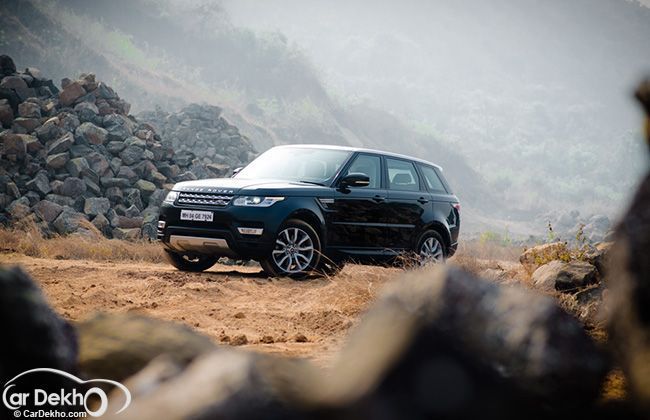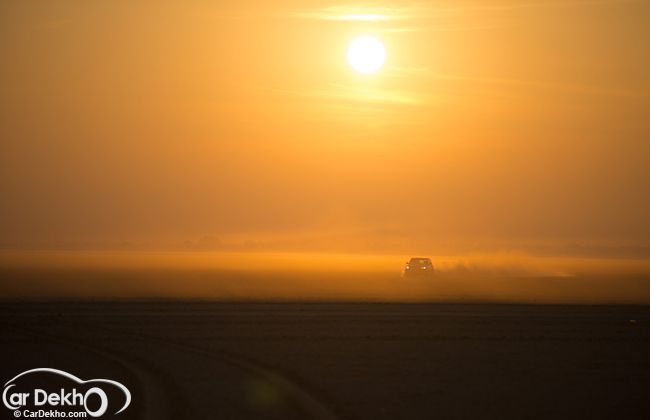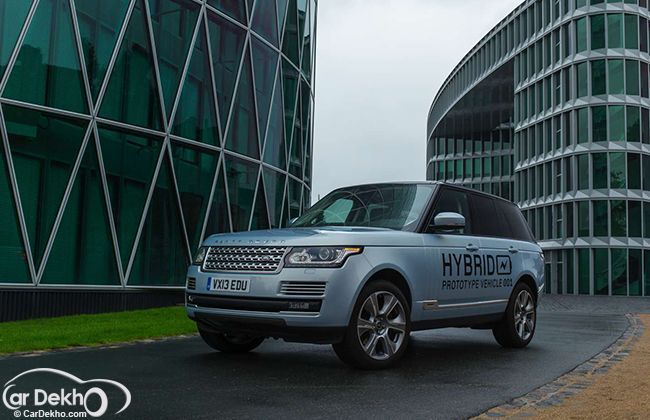Rovering to Success?
Modified On Sep 07, 2012 11:35 AM By Rahul
- Write a comment
Success does not consist so much in of gaining money and power as in gaining happiness. Many young men drift along with the rest of the crowd according to chance, and thus never reach happiness. This is what the Rovering to Success book speaks about. Similar is the case of Land Rover, as it takes a leap forward and introduces the new Range Rover, which overshadows the existing version on paper. Land Rovers are known for their rugged utility-vehicle, with go anywhere capability. With the recent revolution in its design beginning with the Evoque, the British marquee designed vehiclesthat aren’t just capable off-roaders but also look stunting. A new evolution began with the Evoque, and now followed by the fourth-generationRange Rover.

After releasing the images of the new Range Rover, Land Rover has finally unveiled Range Rover prior to its debut at the upcoming Paris Motor Show. This is the fourth-generation Range Rover, and will have an all-aluminum monocoque— the first SUV to have a complete aluminum body frame. So, Land Rover also joins in the Jaguar party of all aluminum construction— like the XJ and XK. We are amongst the 10 journalists from India, who get to see this new-generation Range Rover in skin before the world does at the Paris Motor Show.

The all-new Range Rover design has been derived from a fresh new interpretation of Range Rover design cues. This helps to retain the identity of the SUV with just a glance. Clamshell bonnet, floating roof, split tail gate are retained on the new Range Rover for instant recognition. Even the front grille styling looks refreshed and derived from the existing design. The headlamps and the tail lamps have been derived from the Evoque. This is the new addition to the Land Rover family.

The front bumper doesn’t bulge out and it feels more like a single unit on the car. This makes the Range Rover look more polished. Even fog lamps have been redesigned and out go the round ones. The side metal scoop no longer exists on the new fourth-generation, the rocker now looks more muscular and also the slope of the D-pillar has been reduced. One can instantly recognize the connection of the new-generation to its predecessors with just one glance at the silhouette of the new Range Rover. Even the tail lamps are now LED and some part of it extends a bit closer to the C-pillar.

The new Range Rover’s all-aluminum construction makes its 420kg lighter than the outgoing version. Land Rover claims to have reduced the flab by a whooping 39%. This enhances the performance and also reduces the carbon footprint of the vehicle.Also, the aerodynamic efficiency has improved over the predecessor as it now has a co-efficient of drag of 0.34, which is 10% lesser. On the inside, the Range Rover gets an all-new design. It gets a newly-design steering wheel, while the centre console gets the brown and beige trim. The lower end gets the wood finish, and also the conventional gear stick is replaced with the rising gear knob as a new standard as seen on the Jaguars and the Range Rover Evoque.

It gets the new touchscreen system that is seen on the Evoque, facelift version of XF and the 2012 MY XJ. Also for the first time, the Range Rover gets the rising gear knob. The rear seats also come with the option of a new two-seat Executive Class seating package for the ultimate in rear-seat luxury. The other bells and whistles include the exclusive Meridian surround sound music systems and power upper and lower tailgates. The Meridian audio system comes with three packages, of which one comes with 1700W and 27 speakers.

There is sufficient space in the front row and the seats are large and comfortable. The wheelbase is now increased of the new Range Rover has increased the interior leg space in the second row by 118mm. This means there is more space for the rear seat passenger and even the rear seats are comfy.

The new Range Rover being lighter, it also gets the 3.0-litre V6 diesel engine, apart from the existing 4.4-litre V8 and the 5.0-litre petrol supercharged engines are retained. Also, the transmission has been revised, and the power will be transmitted to the wheels through the new eight-speed self-shifting ZF transmission. The 3.0-litre V6 has the redesigned piston assembly and it now produces 256bhp of power and 600Nm of torque. Despite being lesser displacement, it matches the performance of the 4.4-litre TDV8, when compared to the older Range Rover. This will further augment the fuel efficiency of the Range Rover, as it can cruise on freeways at a lower engine speed and also generate greater torque with the well spread out ratios.

The 4.4-litre TDV8 has also gone through a sea of changes as it now it is now 10kgs lighter as well. There has been a 9% increase in its performance and it now produces 336bhp of power and 700Nm of peak torque. The 5.0-litre V8 petrol supercharged is the other option in this kitty. Another surprise from Land Rover is the option of the hybrid version of the Range Rover. This will be available only with the 3.0-litre TDV6 diesel engine and it will have 1.7KWh motor that will produce close to 68bhp. The total power produced by the hybrid version will be 336bhp and Land Rover claims it to be the first all-terrain hybrid vehicle.

The fourth generation of Range Rover gets next-generation version of Land Rover's Terrain Response® system, which analyses the current driving conditions and automatically selects the most suitable vehicle settings for the terrain.

To ensure exceptional durability and reliability, the new model has been subjected to Land Rover's punishing on- and off-road test and development regime, with a fleet of development vehicles covering millions of miles over 18 months of arduous tests in more than 20 countries with extremes of climate and road surfaces.

The fourth-gen Range Rover gets four-corner air suspension, which makes ride plusher than the previous generation and the Halewood automotive manufacturer claims an enhancement in its handling characteristics and also steering feel. Land Rover also claims to have taken measures to rigorously optimize the body structure and acoustic lamination of the windscreen and side door glass have significantly reduced noise levels.

On paper, the fourth-generation Range Rover has raised the ante in terms of product enhancement and also raised the bar for its competition. We still have to experience how the new Range Rover drive, which won’t be so soon.

The new Range Rover will be launched in Europe after its unveiling at the Paris Motor Show, while deliveries will commence in 2013. The deliveries of the hybrid version will begin in Europe by mid-2013.

The plan for Indian launch hasn’t been disclosed yet, but one can expect the SUV to be launched by year-end or beginning of 2013. The base model pricing will be similar;it will be the higher end model that will be more expensive. The same should go with India as well.










